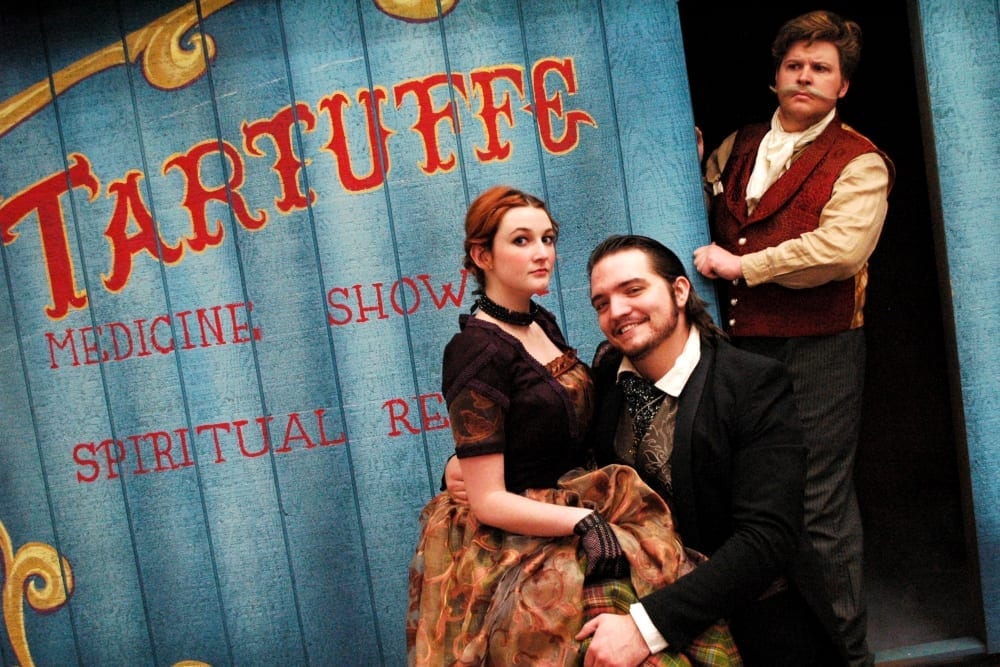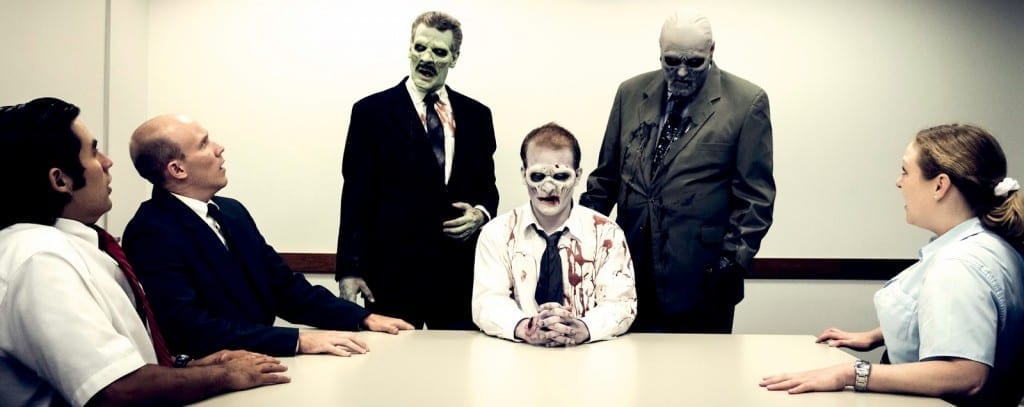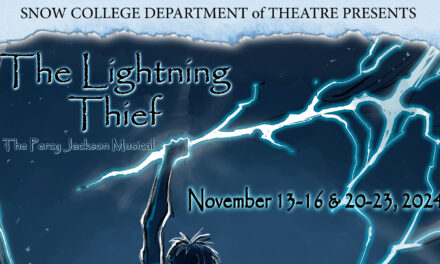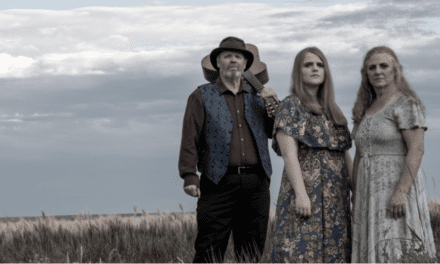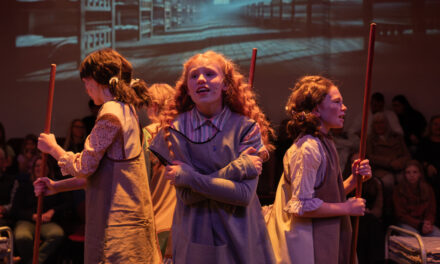OGDEN — Tartuffe is a classic comedic play written by Molière in the year 1664. A play that is still being staged 348 years after its creation deserves a great deal of merit on its own. Tartuffe falls into the category of timeless plays such as the works of Shakespeare. As a reviewer, I was thrilled to be able to attend Weber State’s version of Tartuffe and discover how they had chosen to interpret this classic.
The story of Tartuffe is one of hypocrisy, piousness, and greed. The story surrounds the family of Orgon, played by Rick Rea, and their belief that Orgon has been bewitched by Tartuffe, played by BJ Whimpey. The vast majority of the family and friends can see Tartuffe for what he is: a selfish man who has mastered the skills of manipulation and deceit. The action of the show follows the family and friends trying to convince Orgon and his mother Madam Pernelle of the true nature of Tartuffe.
As I entered into the hallway of the theater, I was greeted by students handing out free popcorn. It crossed my mind that free popcorn for a play set in the 1600’s was a little odd. I was given a simple two page program and shown my seats. The music being played was early American folk music, and the set appeared simple, with two trees at the edges of the stage, and a backdrop that appeared to be a scene from a farm or a prairie. With confusion I glance at the program and I see two different things that give me a clue that this Tartuffe will be different than others I have seen. First, I see under the title “with the addition of thematic entr’acte music including ‘Wait for the Wagon’ and ‘Go Along Mule.'” I paused to try and understand how these songs would have any relevance to Tartuffe. Then I notice another clue in the program, “The scene lies in the South just after the Civil War.” The director, Jennifer A. Kokai, had chosen to change the setting of the play. I have seen this done on numerous occasions with Shakespearean plays. I looked at the rest of the program, hoping for a directors note to explain why sh made this change. Unfortunately, there is not a note, so I was left to wonder.
As the cast entered, they pushed a wagon like those of traveling medicine sales men. It was apparent that they were trying to portray that Tartuffe is such a salesman. The cast begins singing and dancing to music that sounds much more like a modern rock song than mid 1800’s American music. The actors’ voices were strong and the choreography was great (thanks to choreographer Kalyn West). However, I felt a little confused as to how this was going to play out.
During the song, the cast removed the essential props and set pieces from the back of the wagon. This was repeated at the end of the show as the cast members sang through their curtain call and exit. I found this to be a creative choice for the set, and commend set designer Van Tinkham. I also thought that the costumes were beautifully done, and true to the time period of the Civil War. The costume design team, lead by costume designer Sean Bishop, are to be commended for the beauty and variety of costumes on the stage.
It was very intriguing to here the language of Tartuffe spoken with a southern accent. There were a few things in the show, such as mention of the King and running away to England, that were a little difficult to accept in this new premise. Having said that, the rest of the interpretation grew on me as the show progressed.
The entire cast was fabulous with their attention to detail in their acting. I can say that I thought each and everyone performed well. Dorine, played by Stephanie Jameson, was my favorite. There is a scene where she gets angry and starts to let Orgon know just how she feels, and Jameson’s ability to combine the skilled execution of performing her lines with precision along with the physical way she was able engage the audience.
One additional touch that I really enjoyed was the involvement of of the characters of Laurent and Flipote, played by Jeremy Dabb and Rachel Shull. In Molière’s original script, these two characters are silent servants of Tartuffe and Madame Pernelle. Kokai instead had these two interject with a few musical interludes. Shull has a wonderful voice, and it helped me become converted to the idea of Tartuffe in the South. Both Shull and Dabb added to the comedic energy of the show. Perhaps my favorite part of the show was when Cleante, played by Scott Nielson, was delivering a soliloquy , Dabb and Shull provided background music with wonderful comedic timing.
Much can be said about the great performances by all cast members. It is clear these theater students at Weber State have promising futures in performance. It was a wonderful evening of entertainment that I would encourage people to enjoy. I would have loved to have a better understanding of the director’s choices regarding the time in history to set the play. Those who are familiar with Tartuffe will have to allow for a change in their thinking about the play. Those who are unfamiliar can have a new and exciting introduction to this timeless play.

